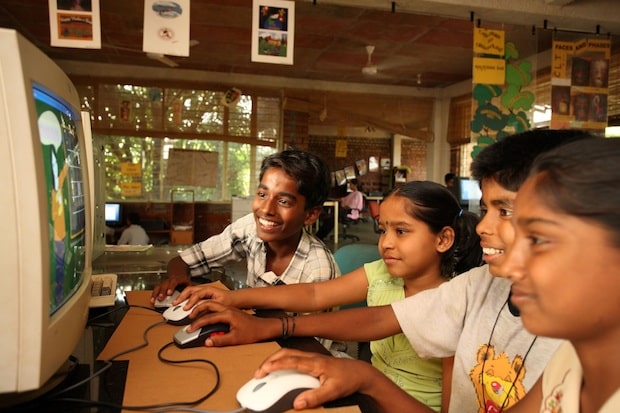Traditional teaching models need to adapt and empower young people to learn how to think for themselves

Parents will know that only a generation ago, information in schools was presented mainly through use of white chalk on blackboards. Few of the current generation of learners will experience blackboards though because most schools now have whiteboards, written on using whiteboard markers. The markers come in many colours but the most frequently used colour is black.
The experience of teaching when there were blackboards was literally ‘black and white’. Mostly, the experience these days is still, literally, black on white. That most teaching presents information, concepts and ideas with use of black and white is a useful analogy for changes happening in teaching.
The traditional model of teaching, and one that is still far too often evidenced, is that students are empty vessels that simply need filling with knowledge. Freire coined the term ‘banking concept’ of education in order to illustrate the approach within pedagogy circles of teachers who ‘deposit knowledge’ into students for later withdrawal (‘regurgitation’) on exams, testing knowledge, but not thinking. This approach to teaching demonstrated a ‘black and white’ philosophy.
Knowledge has been seen, and treated, as entirely objective; free from the idea of cultural or social construct. After all, the certainty behind teaching and learning was black and white. The experiences of children and adolescents were not seen as relevant, and minority perspectives were not generally explored.
Over time there have been changes in the way learning has been understood. Educational academics and psychologists have looked at notions such as cultural relativism, relevance, meaning, engagement, thinking, inquiry, quality and, more recently, teaching and professional standards.
Technology too has developed, with smart devices present within most Australian households. Technology has changed the way students have learned to learn, as well as the way information is accessed and understood. Teaching and schools now have to adapt to these changes.
Questions have arisen for schools such as how to invest in technology, how to use it effectively, and what level of use is appropriate within the classroom to minimise distractions and maximise learning.
On one level, technology is simply a glorified tool for data presentation. Teachers can overuse PowerPoint presentations, believing this is an effective use of information and communication technology, rather than aligning the use of media to relevant content and thinking skills.
The current range of schoolbooks integrate colour into printing which means they are visually more interesting. This also makes the information and concepts more presentable when burned onto CD or USB device for upload to a computer or tablet device. It is this use of colour, encouraging interactive and depth, which makes a mockery of teaching that treats the knowledge within texts as immutable.
Exemplary teaching does not turn colour into black and white – it turns black or white into colour and deepens the richness of colour when colour is present. Exemplary teaching includes an element of critique and critical thinking, that is, thinking that tests knowledge and questions truths and assumptions included in even the most current of texts.
Black and white teaching can be a weakness both in teaching and also in parenting that seeks to ‘assist’ students through applying a fixed-thinking approach to problem solving. Evidence of black and white thinking can be seen when a student tells a parent the method they have to apply to solve a mathematical problem is the way it has to be done because ‘the teacher said it must be done this way’. Similarly, teaching that aims to help students write essays through applying a formula about structure and linking sentences and the like, may serve to help a student achieve a particular mark but does not serve the cause of critical thinking.
Teachers need to understand that they teach for life, not just for an exam or a test. Very few students will remember the detail of how to structure a piece of writing to a particular teacher’s preferred style, but they will remember if they were taught to question the teacher about a formulaic approach to writing and whether that was met with openness. They will also remember whether an answer like ‘it’s in the exam’ or ‘I told you to’ actually serve to increase thinking and independence or to reproduce laziness and dependence.
Parents who co-opt black and white thinking should remember that true courage and innovation does not arise from obedience. It arises from quirkiness, individuality and a questioning of authority or the ‘state of play’.
The technological changes and issues, coupled with complexity arising from emerging understandings of brain development, learning styles, learning difficulties and the like mean that the black and white approach, or the dichotomous view of learning is no longer relevant.
Empowering young people to remember how to think, take academic risks and learn to learn is what should characterise the classroom.
Put simply, teaching and learning must now understand and integrate multiple hues.






